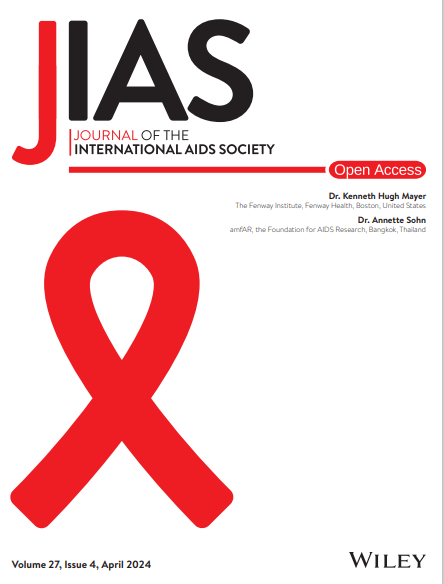Effectiveness of islatravir post-exposure prophylaxis after intravenous challenge with simian immunodeficiency virus in rhesus macaques
Abstract
Introduction
Islatravir (ISL) is a nucleoside reverse transcriptase translocation inhibitor (NRTTI) with robust antiretroviral activity. The efficacy of ISL administered for post-exposure prophylaxis (PEP) was evaluated in a simian immunodeficiency virus (SIV) rhesus macaque intravenous (IV) challenge model.
Methods
Twelve rhesus macaques were challenged with SIVmac251 via IV administration. After 24 hours, six animals received ISL 3.9 mg/kg (the minimum effective dose that gives maximal protection) and six animals were untreated controls. In stage 1, treated animals received 4 weekly oral doses of ISL and were monitored for SIV infection for 7 weeks after the last dose. In stage 2, uninfected, treated animals from stage 1 were challenged similarly; 24 hours after challenge, 3 weekly oral doses of ISL 3.9 mg/kg were initiated. The treated animals were monitored for 7 weeks, as in stage 1. Uninfected, treated animals (from stage 2) entered stage 3. In stage 3, the animals were challenged as in stage 2; 24 hours after challenge, 2 weekly oral doses of ISL 3.9 mg/kg were initiated. The treated animals were monitored for 7 weeks, as before. Finally, in stage 4, uninfected, treated animals were challenged using IV administration and 24 hours later were treated with a single oral dose of ISL 3.9 mg/kg and monitored for 7 weeks. Infection was monitored through plasma viral RNA and proviral DNA amplification. Virus-specific antibody responses were measured using a commercial assay. ISL concentrations in plasma and ISL triphosphate (ISL-TP) levels in peripheral blood mononuclear cells were measured longitudinally.
Results
All untreated controls were viraemic 7 days after SIVmac251 IV challenge. All six ISL-treated animals were completely protected in stages 1–3 (Fisher exact test p = 0.0022). In stage 4, two of six ISL-treated animals became infected with wild-type SIVmac251: viraemia was observed at days 14 and 49 in the two animals (Fisher exact test p = 0.06). Both animals had unquantifiable ISL-TP on the day viraemia was observed.
Conclusions
Two weekly oral doses of ISL 3.9 mg/kg, administered 24 hours post IV SIV exposure, prevents infection of rhesus macaques. These results support further investigation of a long-acting oral NRTTI for PEP.


 求助内容:
求助内容: 应助结果提醒方式:
应助结果提醒方式:


